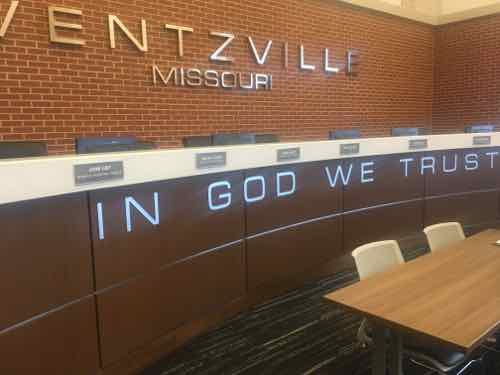My Maternal Ancestors Farmed In Ukraine, Russia For A Couple Of Centuries
Few living today have seen war between European nations, until the last few months. Russia President Vladimir Putin’s war on Ukraine is horrific. The whole world is watching, especially neighboring countries. Eventually this may become World War 3.
When Russia invaded Ukraine I began looking at cities on Google’s Streetview, beautiful. Google has since removed this feature, at least from Mariupol. Satellite views are still available — I love how you have a dense city up to a point then rural farmland — none of the auto-centric sprawl visible in every region in the U.S.
But this post isn’t about present cities in Ukraine, or the war. It’s about my familial connection to Ukraine, Crimea, Poland, Russia, other European nations mentioned nightly on the evening news for months. It’s also about religious freedom.
As the headline states, numerous generations of my ancestors lived in Ukraine and South Russia. However, I’m not Ukrainian or Russian. All eight of my maternal great-grandparents were Mennonites living in settlements in Russia & Ukraine before immigrating to the U.S. and Canada in the late 19th century.
Mennonites are members of certain Christian groups belonging to the church communities of Anabaptist denominations named after Menno Simons (1496–1561) of Friesland. Through his writings, Simons articulated and formalized the teachings of earlier Swiss founders, with the early teachings of the Mennonites founded on the belief in both the mission and ministry of Jesus, which the original Anabaptist followers held with great conviction, despite persecution by various Roman Catholic and Protestant states. An early set of Mennonite beliefs was codified in the Dordrecht Confession of Faith in 1632, but the various groups do not hold to a common confession or creed.
Rather than fight, the majority of the early Mennonite followers survived by fleeing to neighboring states where ruling families were tolerant of their belief in believer’s baptism. Over the years, Mennonites have become known as one of the historic peace churches, due to their commitment to pacifism. (Wikipedia)
In short, Mennonites and other anabaptists don’t believe in baptizing a baby. They believe baptism is something a person should decide for themselves. This distinction from other Christian religions subjected anabaptists (Mennonite, Amish, etc) to religious intolerance.
All my mom’s ancestors for hundreds of years were Mennonite, but that ended when she married my father, who wasn’t a Mennonite.
My maternal ancestors moved every few generations, trying to find a place to farm and follow their religious beliefs.
Vistula delta Mennonites were a historic Mennonite community, established in the mid-16th century in the Vistula river delta in Poland. It originated from the Netherlands and present-day northern Germany. The Mennonite community played an important role in the drainage and cultivation of the Vistula delta and the trade relations with the Netherlands. In the late 18th century a significant number of Mennonites emigrated further and formed the nucleus of the Mennonite settlements in Russia, while many remained in the region after the annexation of the region by Prussia in the Partitions of Poland. With the end of World War II and the flight and expulsion of Germans (incl. Germanized Dutch settlers) the Mennonite settlements in the Vistula delta ceased to exist.
The Plautdietsch language, a mixture of Dutch and the local Low German dialect, originates from the Vistula delta and is still used by Mennonite communities worldwide. (Wikipedia)
This is the context that prompted my ancestors in the late 1700s and early 1800s to move to Russia, Ukraine, and Crimea — the hope of farming and being left alone. They didn’t attempt to assimilate, they set up rural isolated Mennonite villages in settlements.

My recent research has found my ancestors lived in at least 16 different settlements, but the one with the most was the Molotschna Colony.
Molotschna Colony or Molochna Colony was a Russian Mennonite settlement in what is now Zaporizhzhia Oblast in Ukraine. Today, the central village, known as Molochansk, has a population less than 10,000. The settlement is named after the Molochna River which forms its western boundary. The land falls mostly within the Tokmatskyi and Chernihivskyi Raions. The nearest large city is Melitopol, southwest of Molochansk.
Initially called Halbstadt (Half-city), Molotschna was founded in 1804 by Mennonite settlers from West Prussiaand consisted of 57 villages. Known as the New Colony, it was the second and largest Mennonite settlement in the Russian Empire. In the late 19th century, hundreds of people left this colony to settle in North America. Colonies there had groups that later relocated to Latin America, where Mennonites settled in several countries. After many Mennonites left or were deported during and after the last days of World War II, this area became populated largely by Ukrainians. (Wikipedia)
Some of their surnames included: Klassen, Neufield, Weins, Zacharies, Wall, Kruger, Kroeker, Fast, Thiessen, Bornn, Toews, Loepp, and Loewen. My maternal ancestors all immigrated to the U.S. and Canada in the late 19th century. It’s still unclear to me the proximity of their villages to the Pale of Settlement:
A western region of the Russian Empire with varying borders that existed from 1791 to 1917 in which permanent residency by Jews was allowed and beyond which Jewish residency, permanent or temporary, was mostly forbidden. Most Jews were still excluded from residency in a number of cities within the Pale as well. A few Jews were allowed to live outside the area, including those with university education, the ennobled, members of the most affluent of the merchant guilds and particular artisans, some military personnel and some services associated with them, including their families, and sometimes their servants. The archaic English term pale is derived from the Latin word palus, a stake, extended to mean the area enclosed by a fence or boundary. (Wikipedia)
This coincides with the time frame my maternal ancestors were in that part of Europe. My understanding is Jewish people weren’t allowed to farm, they were in cities doing trades. My ancestors, on the other hand, were farmers in small self-sustained rural villages. Recent pictures (before this war) of these areas were simply gorgeous, very beautiful.
Political changes & religious intolerance is why many Mennonites immigrated to North America in the late 19th century. Many Jewish people also left the Pale in the same period.
It’s weird that prior to this war I had little interest in Ukraine and my familial connection. Now I see news reports of fighting in certain regions so I look to see if my ancestors lived there, or nearby. The answer is usually they did.
It has been nearly 150 years since my ancestors lived there, but I feel a connection. The loss of life, disruption of families, destruction of cities, etc is all very upsetting.
— Steve Patterson


